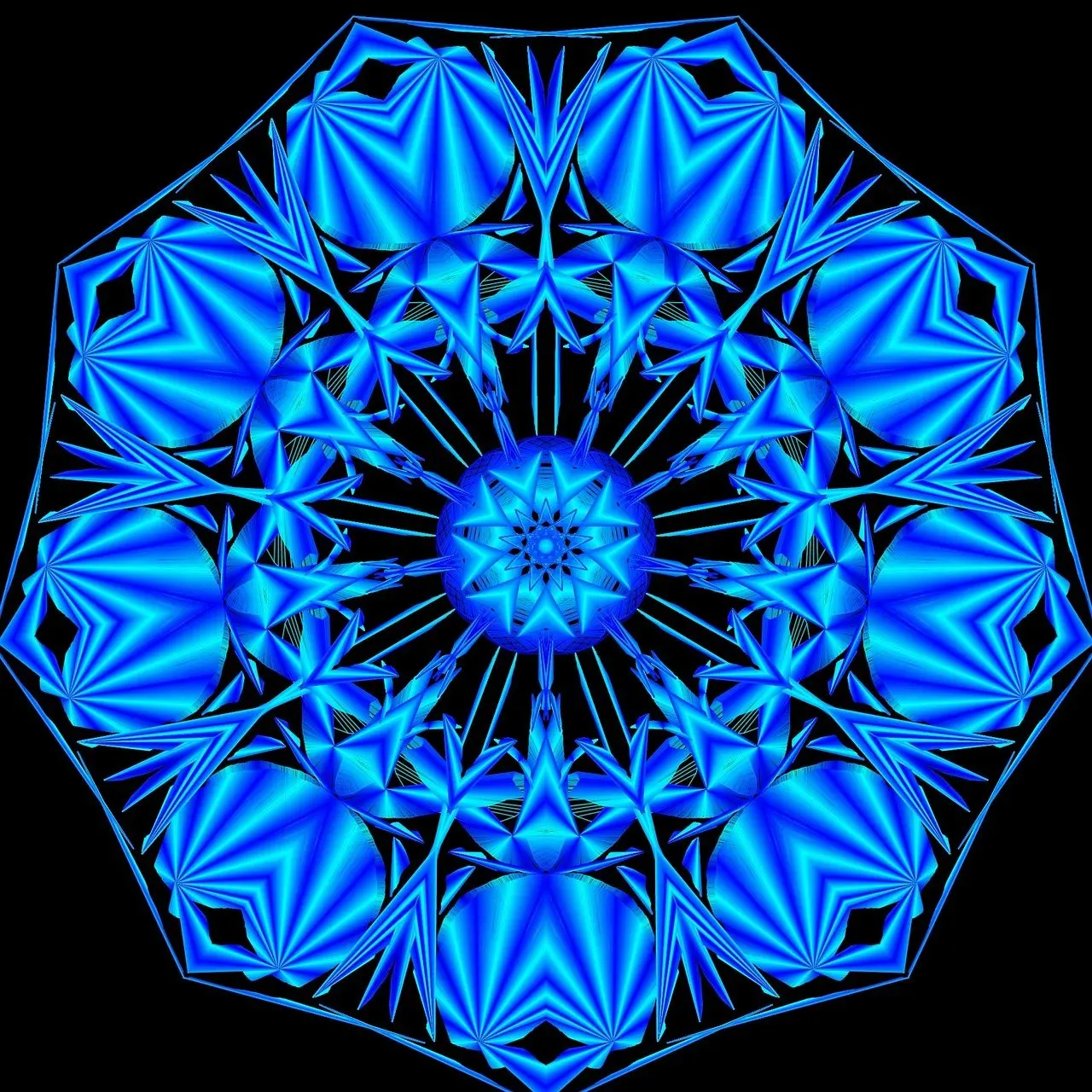The Fates: Weaving Destiny in Greek Mythology

Looking for more amazing products? Check out our online store and explore our collection here! Happy shopping!
Before diving in, please note: This post is for informational purposes only. If you’d like to know more about how we approach topics, feel free to check out our friendly Disclaimer Page.
Hey there, amazing readers! 
We’re committed to delivering quality posts, and your support (even just sticking around despite the ads) means everything to us. So, bear with us, and thanks for helping us keep the good vibes rolling. Now, on to the fun stuff!
TRANSLATE BUTTON AT THE END OF THE ARTICLE
A Quick Overview
Greek mythology is a treasure trove of fascinating characters, but none are quite as intriguing as the Fates.
These three sisters embody the intricate web of destiny that binds every mortal and deity in the mythological universe.
They are both feared and revered, wielding significant power over the lives of all beings.
Let’s dive into their world, exploring their roles, symbolism, and the profound impact they have on Greek myths and modern culture.
Introduction to the Enigmatic Fates of Greek Mythology
In the vast tapestry of Greek mythology, the Fates stand out as powerful figures who determine the course of life.
Known as the Moirai, they are often depicted as three sisters who control the destiny of gods and mortals alike.
Their influence is absolute.
Once a life is woven into their tapestry, there’s little chance of escaping its predetermined path.
The Fates are not mere spectators; they actively participate in the creation, measurement, and termination of life.
Clotho spins the thread of life, Lachesis measures it, and Atropos cuts it.
This dynamic trio embodies the cycle of existence, reminding us that life is both a gift and a journey with a defined end.
Their origin varies across tales, but they are often said to be daughters of Nyx, the goddess of night, emphasizing their deep connection to fate and the unknown.
While the Greek gods often exhibit free will, the Fates’ decrees are absolute.
This creates a fascinating tension in mythology, where even the mightiest must bow to the inevitable.
Meet the Fates: Clotho, Lachesis, and Atropos Explained
Let’s break down the roles of each sister, as they each play a unique and crucial part in shaping destiny.
Clotho: Known as the spinner, Clotho is responsible for creating the thread of life.
Imagine her as the one who starts the journey, setting the stage for the experiences that will follow.
She is often depicted holding a spindle or a distaff, symbolizing the beginning of existence.
Lachesis: The second sister is Lachesis, the measurer.
Her job involves determining the length of the thread.
She carefully assesses each life, ensuring that everyone has their due time.
Lachesis holds a staff, a symbol of her authority in deciding how long one lives.
Atropos: Finally, we have Atropos, the inevitable.
She is the one who cuts the thread, marking the end of life.
Atropos wields a pair of shears, signifying her role in the finality of death.
Her actions can be seen as both compassionate and ruthless, reflecting the duality of life and fate.
Together, these sisters represent the continuum of life, from birth to death, knitting together the experiences that define who we are.
Their unity is essential to the balance of existence.
The Art of Weaving: Clotho’s Role in Destiny’s Loom
Clotho’s role as the spinner is more than just a craft; it’s a metaphor for the beginnings of life.
Each thread she spins represents a new life, filled with potential and promise.
Imagine sitting in a cozy room, watching a skilled artisan at work.
That’s Clotho, carefully crafting the intricate beginnings of every human experience.
Her spinning wheel is a symbol of hope and origin.
It’s a reminder that every person’s journey starts with a single thread – a choice, a moment, or a chance encounter.
The act of spinning also suggests that life is shaped by many factors, including choices, circumstances, and, yes, even fate.
Clotho serves as a nurturing force.
In Greek mythology, she doesn’t create life out of randomness; she weaves it with purpose.
Each thread is unique, just like every individual.
This connection emphasizes the idea that while fate may play a role, there’s room for personal experience and growth.
Measuring Life: Lachesis and the Thread of Existence
Now let’s turn our attention to Lachesis, the layer of fate that brings structure to Clotho’s creation.
Her role as the measurer is vital.
She ensures that every life has its due length, akin to a skilled tailor ensuring the perfect fit for every garment.
Lachesis’s decisions can be seen as a blend of justice and mercy.
She measures not just the years but the experiences that shape a person’s journey.
Is it long or short?
Full of adventure or mundane?
Her actions reflect the idea that quality can often outweigh quantity.
In a way, Lachesis embodies the concept of time.
Time is something we all wrestle with.
We often wish for more, but Lachesis reminds us that every moment counts, and each experience is a thread woven into our narrative.
The length of the thread does not determine its worth.
The Inevitable Snip: Atropos and the End of Life
Atropos, the final sister, is often considered the most daunting of the trio.
The act of cutting the thread may seem harsh, but it represents a necessary end.
Every story must conclude, and Atropos ensures that the narrative reaches its ultimate resolution.
Her shears are a powerful symbol of inevitability.
No matter how much we try to avoid it, death is an integral part of the human experience.
Atropos embodies the truth that while life is precious, it is also transient.
She serves as a reminder to embrace life fully, as its conclusion is part of the natural order.
While her actions may instill fear, they also encourage reflection.
Atropos invites us to consider how we live our lives.
Are we making the most of our time?
Are we prioritizing what truly matters?
Her presence urges us to appreciate the present, as we never know when our thread may be cut.
The Symbolism Behind the Fates and Their Weaving
The Fates, with their distinct roles, symbolize a multitude of themes.
Their weaving is a representation of the interconnectedness of life, fate, and free will.
Each thread in the tapestry is tied to choices and consequences, illustrating how our actions shape our destinies.
Their loom symbolizes the universe itself, with every thread representing a life intertwined with others.
It’s a visual metaphor that highlights the importance of community and relationships.
We’re all part of a larger story, contributing to the collective human experience.
Moreover, the Fates embody the duality of control.
While they dictate certain outcomes, they also remind us of our agency.
Life is a balancing act between fate and free will.
We navigate our paths while recognizing that some elements are beyond our control.
How the Fates Influence Heroes in Greek Myths
The Fates often play a pivotal role in the journeys of heroes throughout Greek mythology.
For instance, in the tale of Heracles, the Fates determine the trials he must face.
They weave a narrative filled with challenges, shaping him into the legendary figure we know.
Think of Odysseus, whose journey home in the "Odyssey" is fraught with obstacles determined by the Fates.
While he exhibits remarkable cunning and strength, it’s ultimately the Fates that set the stage for his trials.
Even Achilles, the greatest warrior, finds himself entwined in their fabric, with his fate sealed long before his birth.
The Fates often remind heroes that their journeys are not solely theirs to control.
Each encounter and every twist of fate adds depth to their stories, showcasing the intricate dance between destiny and choice.
It’s a fascinating narrative that continues to resonate, showing how we all grapple with our fates.
The Fates: Their Interactions with Gods and Mortals
The relationship between the Fates and the gods is complex.
While the gods are powerful, they too are subject to the decrees of the Fates.
This creates an interesting dynamic where divine beings must respect the decisions made by these sisters.
For example, in the "Iliad," Zeus often attempts to intervene in mortal affairs, but he must navigate the Fates’ will.
Even he is bound by their influence.
This highlights the idea that fate is a higher power, governing even the mightiest deities.
Mortals, on the other hand, view the Fates with a mix of fear and respect.
They understand that their lives are inextricably linked to the sisters’ choices.
Individuals pray to the Fates for favorable outcomes, recognizing their authority.
This interaction adds depth to the narrative, as characters grapple with their destinies.
Weaving Destiny: The Fates in Modern Culture
The influence of the Fates transcends ancient mythology, finding a place in modern culture.
They appear in literature, film, and art, often symbolizing the universal themes of fate and free will.
Their stories continue to inspire contemporary creators.
In films like "Clash of the Titans" and "The Matrix," the idea of destiny versus choice plays a significant role.
The concept of fate is explored, showing that while we may strive for control, certain outcomes are beyond our grasp.
These narratives reflect our ongoing struggle with the uncertainties of life.
Moreover, literature often revisits the Fates as characters.
They serve as metaphors for the forces that shape our lives.
Whether in poetry, novels, or plays, their influence is felt, reminding us of the delicate balance between fate and free will.
Lessons from the Fates: Acceptance and Free Will
The Fates offer profound lessons about acceptance and the nature of existence.
While they are often seen as harsh, their role emphasizes the importance of acknowledging life’s uncertainties.
Acceptance can be liberating, allowing us to navigate our paths with grace.
Life’s unpredictability can be daunting.
Still, the Fates encourage us to recognize that we have agency.
Our choices matter, even in the face of destiny.
We can shape our experiences, enriching our lives despite inevitable challenges.
Their teachings prompt us to cherish each moment.
If we view life through the lens of the Fates, we see that every thread contributes to our unique story.
Embracing this perspective empowers us to live authentically, making choices that resonate with our true selves.
Celebrating the Fates: Festivals and Artistic Depictions
Throughout history, the Fates have been celebrated in various forms.
In ancient Greece, festivals honoring the Moirai often included theatrical performances, poetry readings, and artistic displays.
These celebrations highlighted their significance in the community and the shared acknowledgment of fate.
Artistic depictions of the Fates vary widely, from grand statues to intricate paintings.
They are often portrayed in a manner that captures their essence – wise, powerful, and sometimes daunting.
These representations serve to immortalize their influence on humanity.
Modern artists continue to pay homage to the Fates, creating works that explore their themes.
Whether through literature, visual art, or performance, their legacy endures.
By engaging with their stories, we reflect on our lives, our choices, and the intricate paths we traverse.
Conclusion: The Enduring Legacy of the Fates in Mythology
The Fates are more than just figures in Greek mythology; they are symbols of the human experience.
They remind us of the delicate interplay between destiny and choice, weaving a narrative that speaks to our struggles and triumphs.
Their stories emphasize the importance of acceptance, the impact of our actions, and the beauty of life’s unpredictability.
As we navigate our lives, let’s remember the Fates and the lessons they impart.
Embrace each thread of your story, cherish the moments you have, and recognize the power of your choices.
Their enduring legacy teaches us that while fate may guide us, we are the authors of our own narratives.

The Enlightenment Journey is a remarkable collection of writings authored by a distinguished group of experts in the fields of spirituality, new age, and esoteric knowledge.
This anthology features a diverse assembly of well-experienced authors who bring their profound insights and credible perspectives to the forefront.
Each contributor possesses a wealth of knowledge and wisdom, making them authorities in their respective domains.
Together, they offer readers a transformative journey into the realms of spiritual growth, self-discovery, and esoteric enlightenment.
The Enlightenment Journey is a testament to the collective expertise of these luminaries, providing readers with a rich tapestry of ideas and information to illuminate their spiritual path.
Our Diverse Expertise
While our primary focus is on spirituality and esotericism, we are equally passionate about exploring a wide range of other topics and niches 

To ensure we provide the most accurate and valuable insights, we collaborate with trusted experts in their respective domains 
Our blog originally focused on spirituality and metaphysics, but we’ve since expanded to cover a wide range of niches. Don’t worry—we continue to publish a lot of articles on spirituality! Frequently visit our blog to explore our diverse content and stay tuned for more insightful reads.
Hey there, amazing reader! 
Check out our store here and take a peek at some of our featured products below! Thanks for being awesome!













